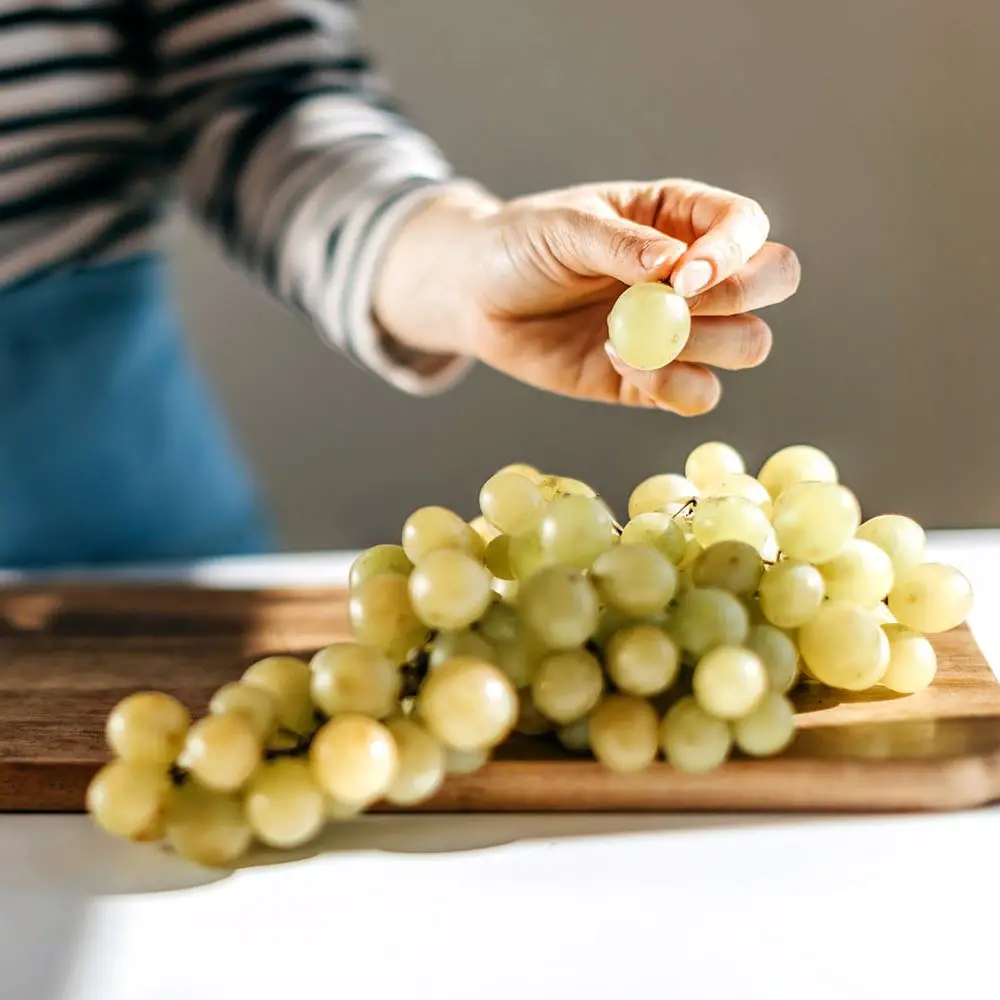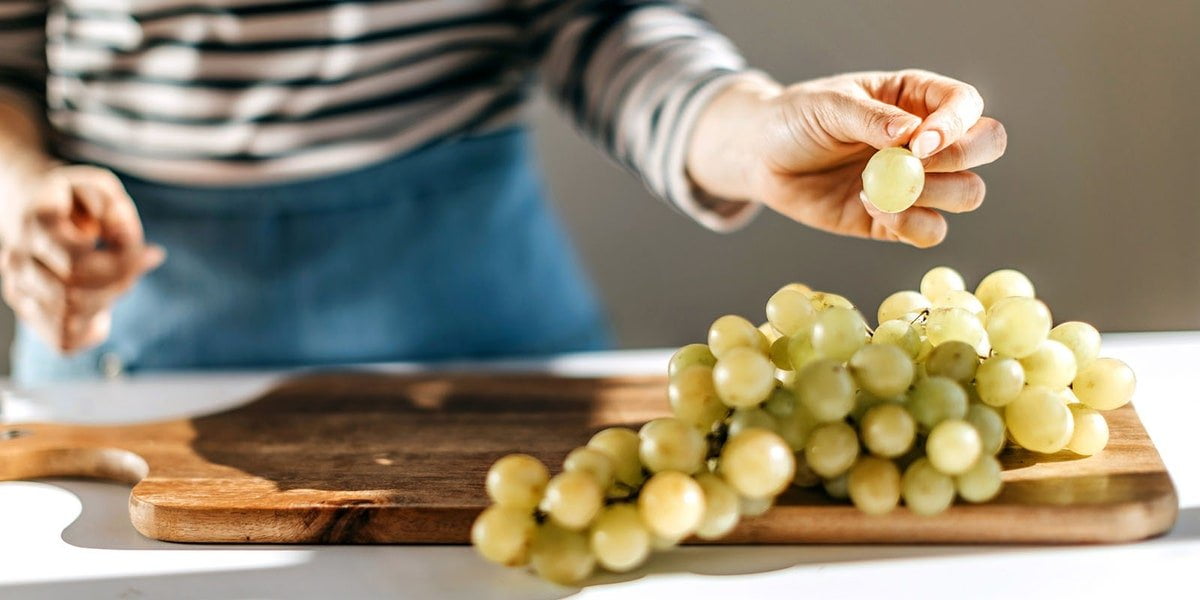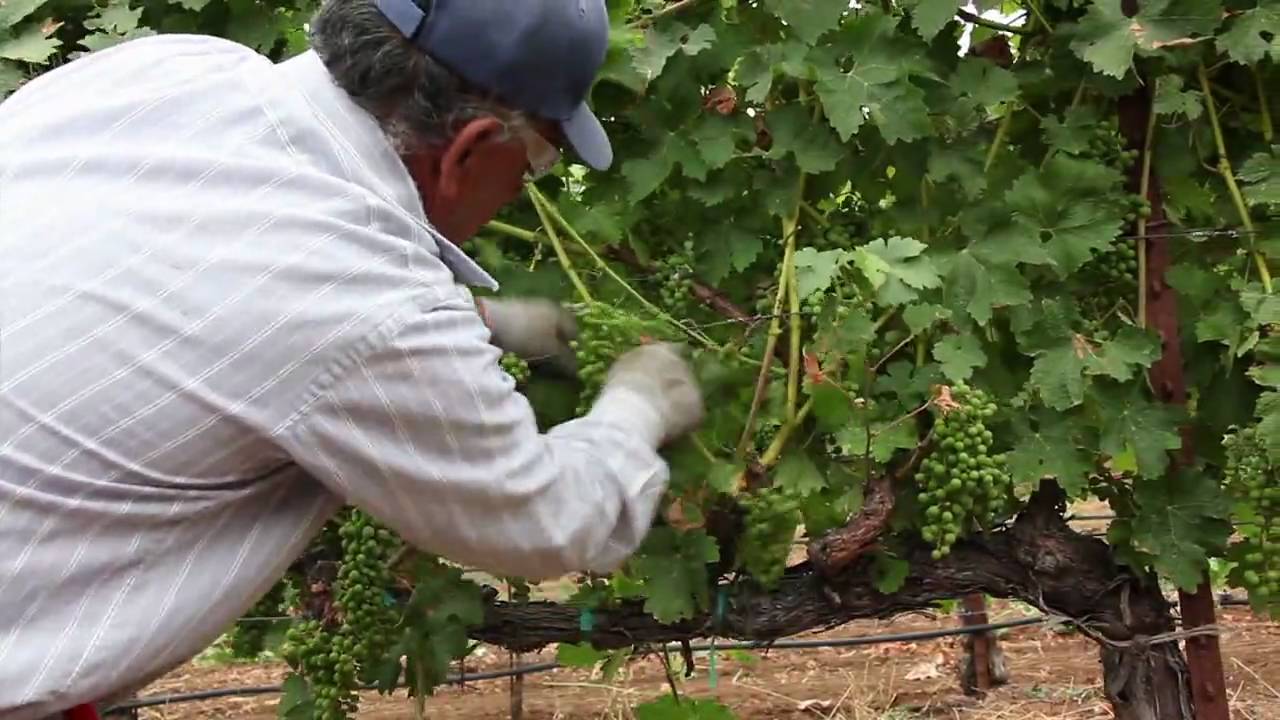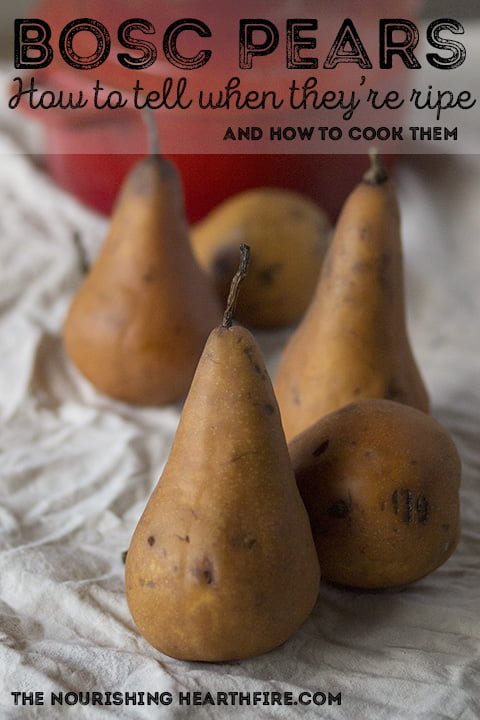In this article, you will discover the essential steps to ripen grapes effectively. Whether you are a professional winemaker or a grape enthusiast, understanding the ripening process is crucial to producing high-quality grapes with optimal flavor, sugar content, and acidity. By following these step-by-step guidelines, you will learn how to identify when grapes are ready for harvest and how to facilitate their ripening process to achieve the desired taste profile. So, let us delve into the intricacies of grape ripening and unlock the secrets to a successful harvest.

Factors Affecting Grape Ripening
Ripening of grapes is a complex process influenced by various factors. Understanding these factors can help ensure optimal grape ripening and enhance the quality of the fruit. The key factors affecting grape ripening include sunlight exposure, temperature, humidity, variety and maturity, pruning and thinning, as well as nutrition and watering.
Sunlight Exposure
Sunlight exposure plays a crucial role in grape ripening. Grapes require adequate sunlight to undergo photosynthesis, which converts sunlight into energy and sugars. Choosing a sunny location for your grapevines is essential to ensure optimal ripening. It is also important to ensure good air circulation around the vines to prevent the development of diseases and maintain a favorable microclimate.
Temperature
Optimum temperature is essential for grape ripening. Different grape varieties have specific temperature requirements for optimal ripening. Generally, temperatures between 70°F to 90°F (21°C to 32°C) are considered ideal for ripening grapes. Extreme temperatures, either too hot or too cold, can have detrimental effects on grape ripening. Protective coverings such as shade cloth or row covers can be used to mitigate extreme temperature conditions.
Humidity
Humidity levels can influence the ripening process of grapes. Maintaining the ideal humidity levels is crucial to prevent excessive moisture or dryness, which can negatively impact grape quality. Excessively dry conditions can lead to shriveled grapes, while excessive moisture can promote the growth of mold or fungi. Controlling moisture around the grapes and ensuring a balanced humidity level is important for optimal ripening.
Variety and Maturity
The variety of grapes and their maturity stage also play a significant role in ripening. Different grape varieties have varying ripening times and requirements. It is important to consider the specific variety being grown to determine the appropriate techniques for ripening. Additionally, grapes need to reach a certain level of maturity before they can ripen properly. Monitoring the maturity stage of grapes is crucial to ensure they are ready for ripening.
Pruning and Thinning
Pruning and thinning techniques can have a significant impact on grape ripening. Correct pruning practices help ensure adequate sunlight exposure and air circulation, which optimize the ripening process. Pruning should be performed at the right time, typically during the dormant season. Thinning the grape bunches by removing excess grapes allows for better airflow and reduces competition for nutrients. Additionally, removing unnecessary shoots helps channel energy towards ripening the remaining grapes.
Nutrition and Watering
Proper nutrition and watering are essential for grape ripening. Fertilizing the grapevines regularly with balanced nutrient solutions provides the necessary elements for healthy growth and ripening. It is important to provide sufficient water to the vines, especially during the growing season. However, it is crucial to control watering during the ripening stage to avoid dilution of sugars and flavors in the grapes. Applying mulch around the base of the vines helps retain moisture and regulate soil temperature.
Methods to Ripen Grapes
To ripen grapes effectively, there are various methods that can be employed. These methods include on the vine ripening, off the vine ripening, and forced ripening. Each method has its advantages and is suited for different situations.
On the Vine Ripening
On the vine ripening involves allowing the grapes to ripen naturally on the vine until they reach the desired maturity. This method is often preferred for high-quality grapes as it allows them to develop their full potential of flavors and aromas. To ensure successful on the vine ripening, some key practices should be followed.
Prune the Vine
Properly pruning the vine is essential for on the vine ripening. Pruning involves removing excessive growth and leaves to promote better airflow, sunlight exposure, and reduce the risk of diseases. Pruning should be done during the dormant season to optimize the vine’s growth and fruiting potential.
Protect from Birds
Birds can pose a significant threat to ripening grapes. To protect the grapes from bird damage, measures such as bird netting or reflective tape can be used. These deterrents help prevent birds from accessing the grapes and causing damage.
Remove Leaves
Removing some of the leaves surrounding the grape clusters is beneficial for ripening. This practice helps increase sunlight exposure to the grape bunches and improves air circulation, reducing the risk of diseases.
Monitor for Diseases and Pests
Regular monitoring of the grapevines for diseases and pests is crucial during the ripening stage. Early detection and proper measures such as targeted spraying or organic pest control methods can prevent potential damage to the grapes and ensure a successful ripening process.
Off the Vine Ripening
Off the vine ripening involves removing the grapes from the vine before they fully mature and allowing them to ripen further in a controlled environment. This method can be useful when adverse weather conditions or other circumstances prevent on the vine ripening. Here are some key steps to follow for off the vine ripening.
Store in a Cool Dark Area
After harvesting the grapes, they should be stored in a cool, dark area such as a cellar or refrigerator. This controlled environment helps slow down the ripening process and maintains the quality of the grapes.
Separate Clusters
To prevent premature spoilage, it is important to separate the grape clusters during off the vine ripening. This allows for better airflow and reduces the risk of mold or fungal growth.
Check for Ripeness
Regularly check the grapes for ripeness during the off the vine ripening process. Gently squeeze a grape to assess its firmness and taste a few berries to gauge their sweetness. Once the grapes reach the desired ripeness, they can be consumed or processed further.
Plastic Bag Method
Another way to ripen grapes off the vine is by using the plastic bag method. Place the grape clusters in a perforated plastic bag to create a controlled environment that traps ethylene gas and promotes ripening. Regularly check the grapes for ripeness and adjust ventilation as needed.
Forced Ripening
Forced ripening is a method that can be employed when there is a need for quick ripening, such as when grapes need to be harvested before adverse weather conditions. This method involves accelerating the ripening process using certain techniques. Here are the steps to follow for forced ripening.
Choose Semi-Ripe Grapes
Select grapes that are semi-ripe but still have some coloring and sugar content. These grapes are more likely to ripen quickly compared to fully immature grapes.
Wrap in Newspaper
Wrap the chosen grapes loosely in newspaper to create a favorable microclimate. The newspaper helps trap the natural ethylene gas released by the grapes and aids in the ripening process.
Add Fruits Rich in Ethylene
Ethylene is a natural plant hormone that stimulates ripening. Add other fruits rich in ethylene, such as bananas or apples, to the container with the grapes. These fruits release ethylene gas, which accelerates the ripening process.
Check Daily
Monitor the grapes daily during the forced ripening process. Gently squeeze a grape to assess its ripeness. Once the grapes reach the desired level of ripeness, they can be harvested and used for various purposes.

Pruning and Thinning
Proper pruning and thinning techniques are crucial for grapevine management and can significantly impact grape ripening. These practices contribute to the overall health of the vine and improve the ripening process. Here are some key steps to follow for effective pruning and thinning.
Prune at the Right Time
Pruning should be performed at the appropriate time to optimize grapevine growth and fruiting. Generally, pruning is done during the dormant season, before the vines start to bud. This helps maintain the desired shape of the vine, promote better sunlight exposure, and optimize nutrient distribution.
Thin the Bunches
Thinning the grape bunches by removing excess grapes can improve the quality of the remaining grapes. This practice helps reduce competition for resources, enhances airflow, and prevents dense clusters that are more prone to diseases. Thinning should be done carefully to ensure an even distribution of grapes and reduce stress on the vine.
Remove Unnecessary Shoots
Removing unnecessary shoots is essential for grapevine management and ripening. These shoots compete for nutrients and can hinder the ripening process. Regularly inspect the vine and remove unwanted shoots, while ensuring the main shoots that bear the grapes are left intact.
Provide Adequate Sunlight
Sunlight exposure is crucial for grape ripening. Pruning techniques should be employed to ensure adequate sunlight reaches the grape bunches. Removing excessive leaves and properly training the vine can optimize sunlight exposure and promote uniform ripening of the grapes.
Nutrition and Watering
Proper nutrition and watering practices are essential for grapevines to develop and ripen successfully. Optimizing nutrient availability and water management contribute to the overall health of the vine and the quality of grapes. Here are some key considerations for nutrition and watering.
Fertilize Regularly
Regular fertilization is vital for providing grapevines with the necessary nutrients to support growth and ripening. Use balanced fertilizers specifically formulated for grapevines to ensure the correct nutrient ratios. Follow the recommended dosage and timing for application to avoid overfertilization.
Provide Sufficient Water
Grapevines require sufficient water throughout their growth and ripening stages. Adequate water supply is crucial for nutrient uptake, photosynthesis, and maintaining turgor pressure in the grapes. Irrigation should be provided consistently, considering the vine’s water requirements, soil moisture levels, and weather conditions.
Control Watering During Ripening
While grapevines require sufficient water during their growth stage, it is important to control watering during the ripening stage. Excessive watering during ripening can lead to dilution of sugars and flavors in the grapes. Monitoring soil moisture levels and adjusting irrigation accordingly helps maintain the desired ripeness and quality of the grapes.
Apply Mulch
Applying mulch around the base of the grapevines offers several benefits for ripening. Mulch helps regulate soil temperature, conserve moisture, suppress weed growth, and promote nutrient cycling. Use organic materials such as straw or wood chips as mulch to provide a favorable environment for grape ripening.

Sunlight Exposure
Sunlight exposure is a crucial factor affecting grape ripening. Optimizing sunlight exposure promotes photosynthesis, which is essential for sugar production and flavor development in grapes. To ensure adequate sunlight exposure, consider the following practices.
Select a Sunny Location
Choose a location for planting grapevines that receives ample sunlight throughout the day. Full sun exposure is desirable for grape ripening. Avoid areas with excessive shade or obstructions that may hinder sunlight penetration.
Ensure Good Air Circulation
Good air circulation around the grapevines is essential for maintaining a favorable microclimate and preventing the development of diseases. Proper spacing between the vines and ensuring adequate airflow through pruning practices help optimize sunlight exposure and minimize the risk of fungal infections or rot.
Protect from Excessive Sun
While sunlight exposure is important, excessive sun can lead to sunburn and damage the grapes. In regions with intense sun or during heatwaves, consider using protective coverings such as shade cloth or row covers. These coverings help diffuse sunlight and prevent direct exposure to UV rays, reducing the risk of sunburn while maintaining optimal ripening conditions.
Temperature
Temperature plays a critical role in grape ripening, as it influences biochemical and physiological processes within the grapevine. To ensure optimal temperature conditions for grape ripening, consider the following guidelines.
Optimum Ripening Temperature
Different grape varieties have specific temperature requirements for optimal ripening. However, a general range of 70°F to 90°F (21°C to 32°C) is considered ideal for ripening most grape varieties. Regularly monitor temperature conditions in the vineyard and adjust management practices accordingly to maintain a favorable ripening environment.
Avoid Extreme Temperatures
Extreme temperatures, whether too high or too low, can have adverse effects on grape ripening. Heatwaves can lead to dehydration, sunburn, and accelerated grape sugar accumulation, affecting the balance of flavors. Conversely, extremely cold temperatures can delay ripening or cause damage to the grapevines. Use protective coverings, such as shade cloth or row covers, to mitigate extreme temperature conditions and minimize their impact on grape ripening.
Use Protective Coverings
Protective coverings can be utilized to create a stable microclimate and moderate temperature fluctuations. Shade cloth or row covers help regulate temperature, reduce heat stress, and protect the grapes from direct sunlight. Properly installed coverings allow for airflow while providing the necessary shade to maintain optimal ripening conditions.

Humidity
Humidity levels in the vineyard can significantly affect grape ripening. Maintaining appropriate humidity levels is crucial to ensure optimal vine growth and prevent detrimental effects on grape quality. Consider the following practices for managing humidity.
Maintain Ideal Humidity Levels
The ideal humidity range for grape ripening is between 40% to 70%. Monitoring humidity levels in the vineyard using weather stations or humidity sensors can help ensure optimal conditions. Adjustments can be made, if necessary, through irrigation practices or by using techniques such as misting to increase humidity levels in dry conditions.
Control Moisture Around Grapes
Excessive moisture around the grape clusters can lead to the development of fungal diseases such as botrytis or powdery mildew. Managing canopy density through pruning practices, promoting proper airflow, and reducing excess irrigation can help control moisture levels around the grapes. Regular monitoring and prompt action to address any signs of disease can prevent further damage to the ripening grapes.
Prevent Excessively Dry Conditions
Conversely, excessively dry conditions can lead to shriveled grapes and poor ripening. Supplemental irrigation can be employed in arid regions or during prolonged dry spells to maintain adequate moisture levels in the soil and promote healthy vine growth. Careful monitoring of soil moisture and implementing appropriate watering practices help prevent excessively dry conditions and ensure optimal grape ripening.
In conclusion, various factors contribute to grape ripening, including sunlight exposure, temperature, humidity, variety and maturity, pruning and thinning, as well as nutrition and watering. Understanding these factors and implementing appropriate techniques can help facilitate the ripening process and enhance grape quality. Whether utilizing on the vine ripening, off the vine ripening, or forced ripening methods, proper management practices are essential to ensure a successful and flavorful harvest. By paying attention to the specific needs of the grape variety, providing optimal growing conditions, and employing sound vineyard management practices, you can maximize the ripening potential of your grapevines and enjoy the fruits of your labor.



